San Francisco’s Nob Hill neighborhood was once home to the city’s richest railroad barons and other wealthy citizens, and remains an upscale enclave. The area is home to a number of grand buildings from the early twentieth century.
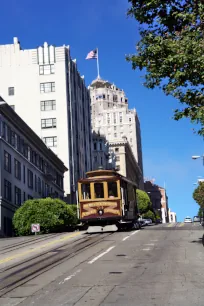
Living in Nob Hill
Bordered by Polk, Post, Washington, and Mason Streets, the neighborhood known as Nob Hill has always been one of San Francisco’s wealthiest communities. Once the site of numerous mansions and other grand buildings – a few of which still exist – Nob Hill is today a bit more eclectic but still just as enticing a place in which to live or visit.
Back during Gold Rush times, when San Francisco’s famed cable cars began carrying people up the hill, Nob Hill became the most desirable place to live. After all, the view is incredible and, in those days, wealthy citizens didn’t want to live “down the hill” near the waterfront, where days were noisy and nights bawdy.
The Nobs
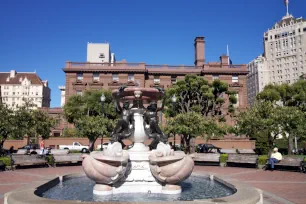
Many of the rich who accumulated their wealth during the gold rush era in often dubious circumstances built their mansions on top of this hill, trying to outdo each other. Nob was one of the names given to these magnates, which is where the hill got its name from.
Some of those building their mansion on Nob Hill included ‘Bonanza King’ James Flood, his companion James Fair, and a group known as the Big Four: Mark Hopkins, Collis P. Huntington, Charles Crocker and Leland Stanford. As (reputedly corrupt) business partners who invested in the first transcontinental railroad, they were some of the most hated people of their time, dubbed ‘Robber Barons’. All four built a large mansion on top of the hill, but none survived the earthquake and fire of 1906.
Sights
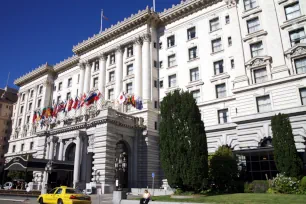
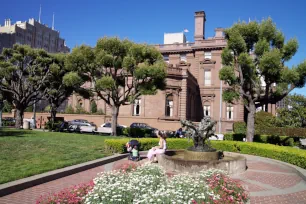
If you are traversing the neighborhood known as Nob Hill, there are a handful of must-sees that should be included on your itinerary.
Cable Car Museum
Nob Hill is home to the city’s Cable Car Museum. This museum, located on Mason Street, is housed in the city’s cable car barn and powerhouse and provides visitors with an excellent look at the history of this famous form of transportation.
You can also view a number of vintage cable cars and shop in the small gift shop, where everything is cable car-themed. The barn is still actively used as the center of the cable car system. From a deck, you can see the mechanics that pull the cable cars up the hills.
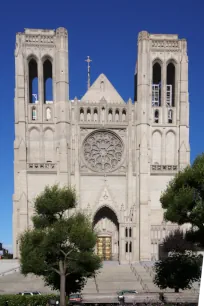
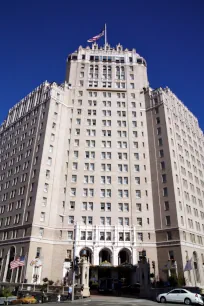
Huntington Park
In the center of Nob Hill is pretty Huntington Park. Once the site of the mansion of railroad tycoon Collis Huntington and his wife Arabella, the park was built after the 1906 earthquake flattened the grand estate. A good place to relax, the park has plenty of benches as well as a children’s playground. Don’t miss the replica of Rome‘s Fountain of the Tortoises, located in the middle of the park.
Grace Cathedral
Adjacent to Huntington Park is Grace Episcopal Cathedral. The largest Episcopal church on the West Coast, this cathedral boasts elaborate stained-glass windows and massive bronze doors. The cathedral was built between 1928 and 1964 after the Notre-Dame Cathedral in Paris. Check out their concert schedule as well.
Mark Hopkins Hotel
The Mark Hopkins Hotel was built in 1925 at the site of the mansion of Mark Hopkins, one of the ‘Big Four’ railroad tycoons. Like many other wooden mansions, it was destroyed by fire in the aftermath of the 1906 earthquake.
Fairmont Hotel
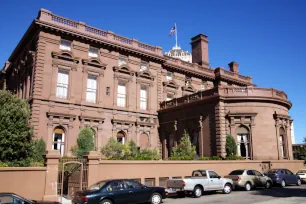
Built by the daughter of James Fair, the opulent Beaux-Arts building was destroyed by the 1906 fire just two days after it was completed. Fortunately, it was soon rebuilt.
Pacific-Union Club
This building in Italianate style, also known as the Flood Mansion, is one of the few that survived the fire of 1906. It was built in 1886 by architect Augustus Laver for James Flood, known as the bonanza king since his wealth was the result of the discovery of a bonanza. After the fire, the burnt-out building was purchased and renovated by the Pacific-Union Club, a private social club with its roots in the gold rush era.

